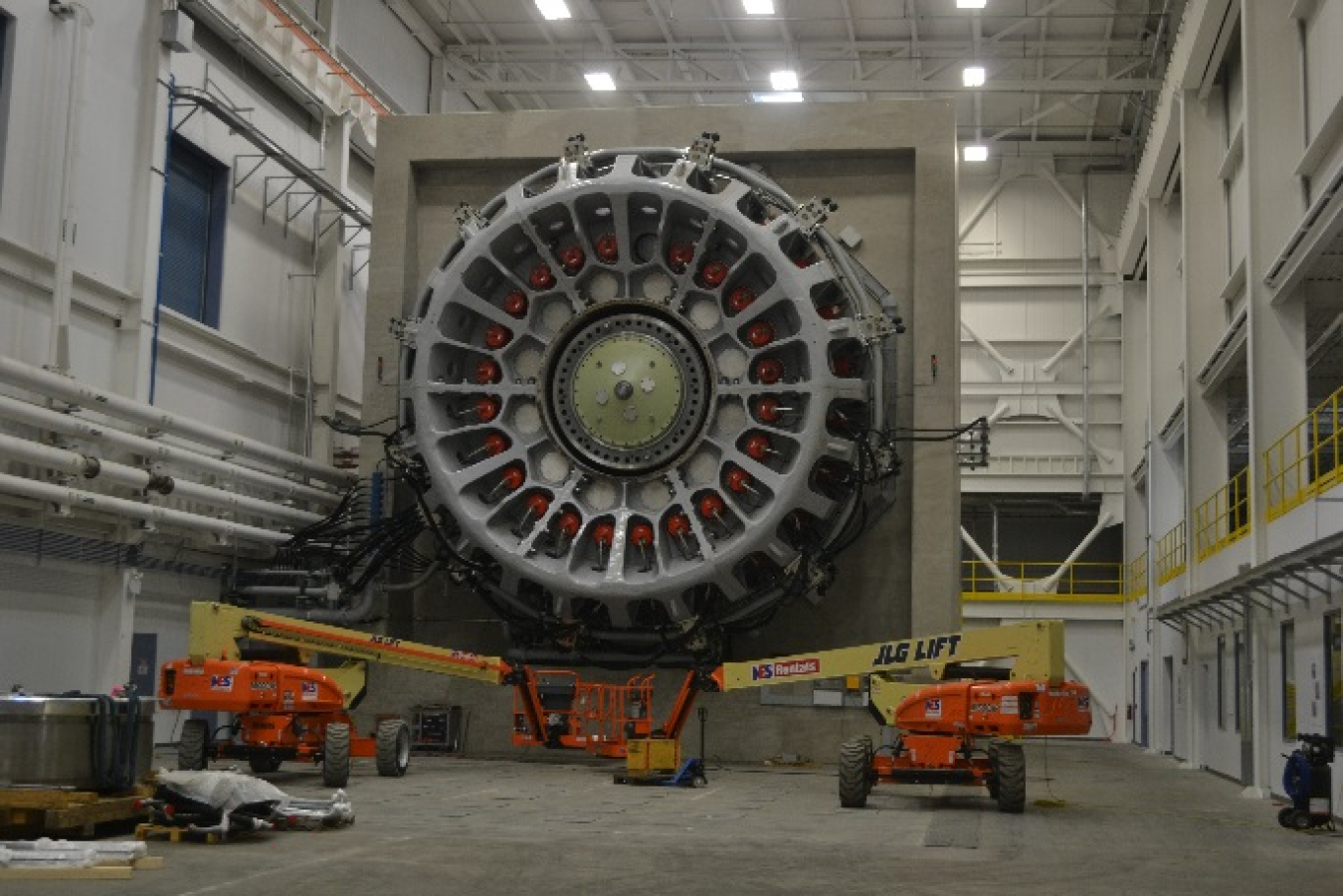MHI Vestas announced a 5-year funding with Clemson University to test its new 9.5-megawatt gearbox at Clemson's SCE&G Energy Innovation Center.
Wind Energy Technologies Office
May 8, 2018
MHI Vestas will be the first company to test a next-generation drivetrain on the 15-megawatt dynamometer test stand at Clemson University's SCE&G Energy Innovation Center. Photo courtesy of Clemson's SCE&G Energy Innovation Center
Last fall, wind turbine manufacturer MHI Vestas announced a $35 million, 5-year funding with Clemson University to test its new 9.5-megawatt (MW) gearbox at Clemson's SCE&G Energy Innovation Center in Charleston, South Carolina. The gearbox is for MHI Vestas's new 9.5-MW offshore wind turbine, which has a rotor diameter of 164 meters (over 500 feet) and will be the most powerful wind turbine in the world.
The partnership between Clemson University and MHI Vestas to test the drivetrain over a period of several years marks the achievement of the U.S. Department of Energy (DOE) goal to establish a U.S. testing facility for both land-based and offshore wind development in the United States.
In November 2009, DOE provided Clemson University's Restoration Institute a $45-million financial-assistance award funded through the Recovery Act to design, build, and operate a facility to test next-generation wind turbine drivetrain technologies. The university matched the grant with $53 million in public and private funds and developed the Energy Innovation Center, which can test wind turbine drivetrains on two dynamometer test rigs: 7.5 MW and 15 MW in capacity rating.
MHI Vestas is focused on designing, manufacturing, installing, and servicing offshore wind turbines. Vestas, a Danish company committed to the U.S. marketplace, currently has three manufacturing plants in Colorado. The joint venture company will now test its large drivetrain, intended for offshore wind development, over an extended period of years utilizing the 15-MW test stand. Dynamometer test rig modifications and equipment installation are currently underway. The planned testing will allow MHI Vestas to measure how the 9.5-MW gearbox and bearings will react over the course of a 20-year wind turbine lifespan. By collecting and analyzing the test data, the company said it will be able to optimize a service strategy for the turbine with the goal of reducing the levelized cost of electricity for offshore wind, while establishing a supply chain for the emerging U.S. offshore wind industry.
While MHI Vestas will be the first company to test a next-generation drivetrain on the 15-MW test stand, Clemson is partnering with General Electric (GE) to test wind turbine drivetrains using the 7.5-MW test stand. The third GE turbine drivetrain is now on Clemson's 7.5-MW test stand.
Additionally, Clemson and DOE funded an eGRID research facility to provide up to 20 MW of tailored electrical power for equipment testing. The research grid may operate at various voltages and frequencies, allowing testing of equipment from around the world. This capability allows turbine manufacturers to test the grid resilience and reliability of turbines by simulating grid faults and grid voltage scenarios in a laboratory setting.

